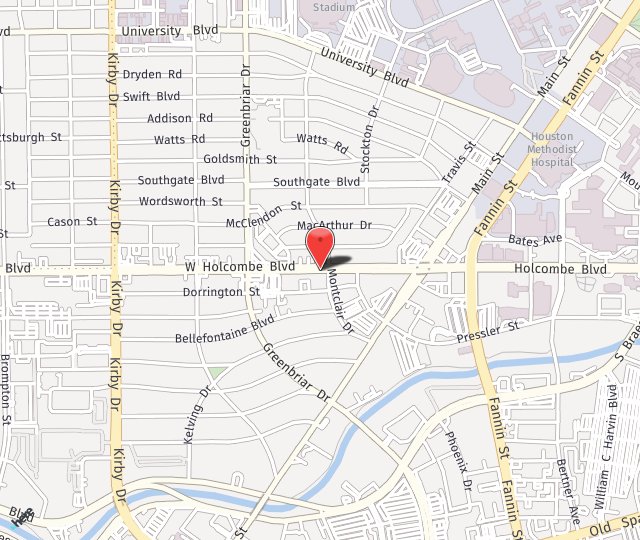What is Dental Bonding?
Dental bonding is a cosmetic and restorative technique that has been performed as a convenient way to improve the appearance of a tooth or teeth. The process involves the application of a multi-colored resin blend, which is hardened with light to bond to the front surface of the tooth.
Who are the ideal candidates for dental bonding?
Dental bonding may be a good treatment option for individuals who have minor aesthetic problems they would like to correct. Patients who can undergo this treatment have healthy teeth and are free of excessive trauma or decay. Bonding is not appropriate for large cosmetic problems, such as significant gaps in between teeth or teeth that appear too short. Bonding is not intended for the restoration of broken teeth but may be used to disguise small chips in certain areas of a tooth.
What problems can dental bonding fix?

Dental bonding is primarily intended for the cosmetic enhancement of a tooth or teeth. Some of the common improvements that can be achieved include:
- Chips or cracks can be disguised beneath bonding material.
- Stains such as spots on teeth can be covered to improve uniform shading.
- Small gaps in between teeth can be filled in with bonding material.
- Composite resin is often used as an alternative to silver amalgam fillings.
What are the benefits of dental bonding?
The primary benefit of dental bonding is that this technique can enhance the appearance of a tooth or teeth in a single visit. Some describe dental bonding as a cost-effective alternative to porcelain veneers. However, one must take into account how long bonding will last in comparison to veneers and also the likelihood of staining or future damage that may occur to the applied resin material.
We are happy to discuss the potential benefits, costs, and potential disadvantages of dental bonding during your consultation with Dr. Konig.
Who is not a candidate for dental bonding on a tooth?
Dr. Konig cannot place composite resin on a tooth if the tooth has extensive damage. For instance, if the tooth has a deep crack, he will not place bonding on the tooth. It would require a crown or maybe an onlay for repair. If a tooth has decay, it also cannot receive bonding until the decay has been fully removed and a filling placed. If a patient has gum disease, bonding is not appropriate until the gums have been addressed.
Dental bonding is only a cosmetic dental procedure. To have Dr. Konig fix a cosmetic flaw with the tooth any underlying issues with the health of the tooth would need to be fixed first.
Also, certain large issues, such as a large chip, cannot be fixed with bonding. The tooth would likely need a crown. Large gaps between teeth cannot be fixed with bonding. Small gaps, yes, but not large gaps.
How Does Tooth Bonding Work?
In dental bonding, Dr. Konig uses a special resin composite to reshape or even whiten your tooth. The dental bonding agent adheres to your tooth, and after cured, it can be as hard as your normal tooth enamel. To give it a natural look, Dr. Konig custom shades and uses multiple shades to ensure the bonding is colored to closely match your natural teeth. As a smile artist, Dr. Konig sometimes recommends dental bonding in conjunction with teeth whitening to ensure a bright uniform color and smile.
Find out how tooth bonding is a viable option for your smile and can enhance your smile or if there are better options for you by calling the office of Ronald W. Konig, DDS, FAGD, LVIF at 713-668-2289 for service in the Houston area, including Sugar Land, The Woodlands, Katy and other nearby communities.
Is there any downtime involved when having dental bonding done?
There isn’t any recovery or pain associated with dental bonding with Dr. Konig. The composite resin is applied to the exterior of the tooth. Patients don’t even need any local anesthetic prior to having dental bonding.
What is the recovery from dental bonding?
There is no significant recovery time needed after dental bonding. Patients can resume normal activities right away, such as returning to work. While there are no substantial restrictions after having dental bonding treatment, patients should avoid drinking beverages that may stain teeth, such as red wine or tea, for 24 to 48 hours. They should also avoid biting on hard foods or objects, as this could degrade the strength of the dental bonding procedure.
What happens if the bonding on a tooth or teeth cracks or breaks off?
This is one of the real pluses of dental bonding because if something damages the composite resin on a tooth, such as when chewing or biting, the existing resin can be removed from the tooth and replaced.
What Our Patients Have to Say
"Dear Dr. Konig, thank you for taking such good care of me following a very bad dental experience. You have restored my confidence and trust and have given me a beautiful smile!! I will never be able to repay you for your compassion and sensitivity. All my friends and family and especially my husband attest to the skillful job you did in making my smile look brighter and my teeth whiter. Thank you all again and I hope you keep doing what you are doing for a long time."
Tooth Bonding Before & After Photos
Almost all Americans (99.7%) believe a smile is an important social asset. Today, there are a variety of ways that we can transform problems such as stained, gapped, chipped, cracked or misaligned teeth, into the smile of your dreams. One affordable and popular cosmetic dentistry option we offer is dental bonding.
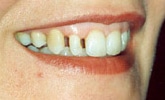
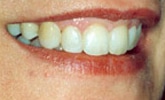
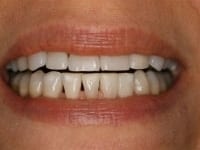
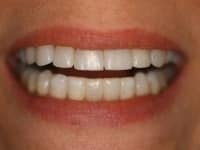
Porcelain Veneers vs. Dental Bonding
There are many articles touting bonding and as more conservative and less costly than porcelain veneers. With the improvements in porcelain technology and being able to layer porcelain with several colors keeping the porcelain veneers thin, bonding has through the years ,had less advantages than in the past. In the hands of a skilled and trained esthetic dentist, excellent results can be obtained with both porcelain and bonding, however, bonding will have a greater probablility to discolor and lose its beauty than porcelain.
The fees for bonding are not significantly less than for porcelain veneers. There are, however, some excellent indications for bonding such as small spaces on one or two teeth that are not in the bite. It is also important to note that in most cases, it is not a good idea to increase the length of teeth with bonding.
How long can I expect my dental bonding to last?
You can directly impact how long your dental bonding lasts on your teeth. If you follow a good home hygiene routine and avoid chewing ice and your fingernails, your bonded teeth will look great for a decade or so. Your resin can wear down over that time, and it can become slightly stained. At that point, Dr. Konig can remove the old composite resin and replace it with new resin.
How soon after my bonding is done can I eat?
You can eat as soon as you leave our Holcombe Boulevard offices, but you want to do a couple things for the first 48 hours after your treatment. Refrain from drinking beverages such as red wine and coffee that tend to stain the teeth for two days after your bonding is placed. Also, avoid biting down on hard objects or foods for the first two days. As for those hard foods, making a habit out of chewing bones and such with bonded teeth will typically shorten the lifespan of your bonding.
Are there any risks involved with dental bonding?
As mentioned above, there isn’t any recovery necessary with dental bonding. The composite resin is applied only to the outer surface of the tooth after Dr. Konig first lightly etches the tooth for better adhesion. There are no incisions or anything invasive with these procedures.
As for composite resin, it is completely safe. Composite resin is made from a mixture of acrylic and glass. It is fast becoming the standard for fillings, replacing silver amalgam (which has been used for 150 years, but is made up of mostly mercury and other metals). Composite resin is completely safe, durable, and is basically invisible when placed on a tooth.
Can I whiten teeth that have dental bonding on them?
The composite resin used for dental bonding cannot be whitened, but it is far more resistant to staining than your natural tooth enamel. If over time your bonded teeth become stained, you can always have Dr. Konig remove the stained composite resin and replace it with new resin.
How much does dental bonding cost?
Dental bonding is an affordable treatment option for many people, though not significantly less than the veneer process. The cost of treatment can vary from one person to another because each situation is unique. Contributing factors include the extent of improvement desired, the number of teeth being treated, and the inclusion of adjunctive treatments, such as a cleaning or teeth whitening treatment. Patients can expect to receive a detailed cost breakdown after their consultation with Dr. Konig.
Is dental bonding covered by my dental insurance?
Bonding is typically considered to be an elective procedure by insurance companies, so it is not covered. Dental plans do vary widely in their coverage, so you can check, but it is usually not covered. You can use your flexible spending or health savings account money to pay for your bonding.
Schedule a Consultation with Dr. Konig Today!
To learn more about our Dental Bonding procedures or any of our other cosmetic treatments, please call us at 713-668-2289 to schedule a consultation. Konig DDS is proud to serve Houston, TX, and the surrounding areas.

